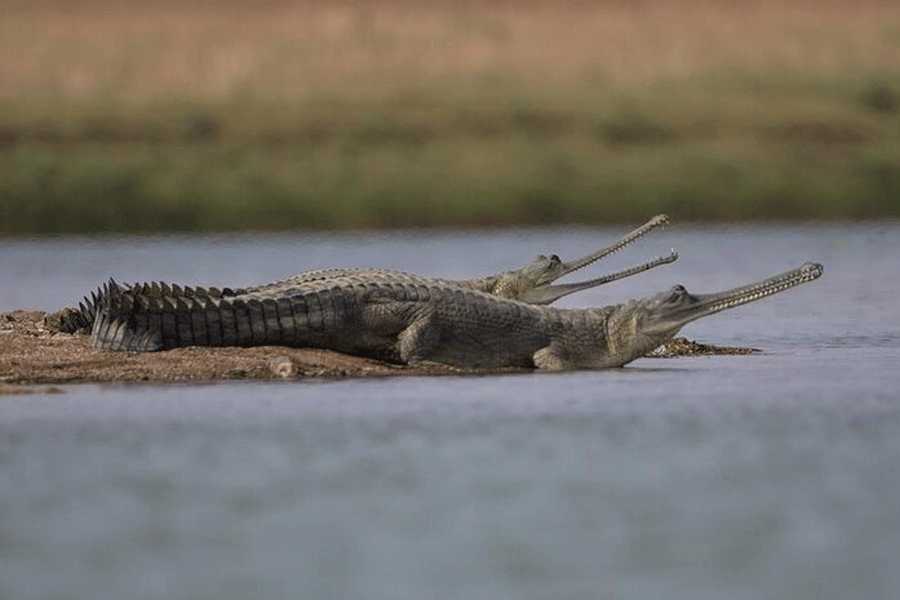The Bihar government has decided to set up the state's first incubation and interpretation centre for gharials and turtles, a senior official said on Saturday.
A memorandum of understanding (MoU) will soon be signed with the Wildlife Trust of India, a charity organisation, in this regard, Principal Chief Conservator of Forests & Chief Wildlife Warden PK Gupta told PTI.
"The state government has given in-principle approval for establishing the state's first 'Incubation Centre-cum-Nature Interpretation Centre' for gharial and turtles in the Gandak river in Bettiah in West Champaran district," he said.
"The Los Angeles Zoo in the US state of California has agreed to strengthen the ongoing conservation effort through ex-situ incubation and further release of the hatchlings back to the river safely," he said.
The Gandak river has become the second successful breeding site for gharials in India after the National Chambal Sanctuary on the Chambal river near the tri-junction of Rajasthan, Madhya Pradesh and Uttar Pradesh, he added.
The Gharial Conservation Project in the Gandak river, launched by the state government in association with WTI in 2014, yielded positive results as 217 fish-eating long-snouted reptiles were sighted in its 284-km stretch as compared to just 30 before, Gupta said.
"Forest officials in West Champaran have been asked to coordinate with the district administration, and complete all formalities for the transfer of the identified land to the Forest Department for the centre at the earliest," he said.
Gupta said that ex-situ conservation is the process of protecting an endangered species outside its natural habitat.
"For instance, by removing part of the population from a threatened habitat and placing it in a new location, an artificial environment similar to the natural habitat and within the care of humans such as zoological parks and wildlife sanctuaries. Ex-situ conservation measures are required for further increasing the numbers of gharials and turtles in Gandak river," he explained.
Except for the headline, this story has not been edited by The Telegraph Online staff and has been published from a syndicated feed.











